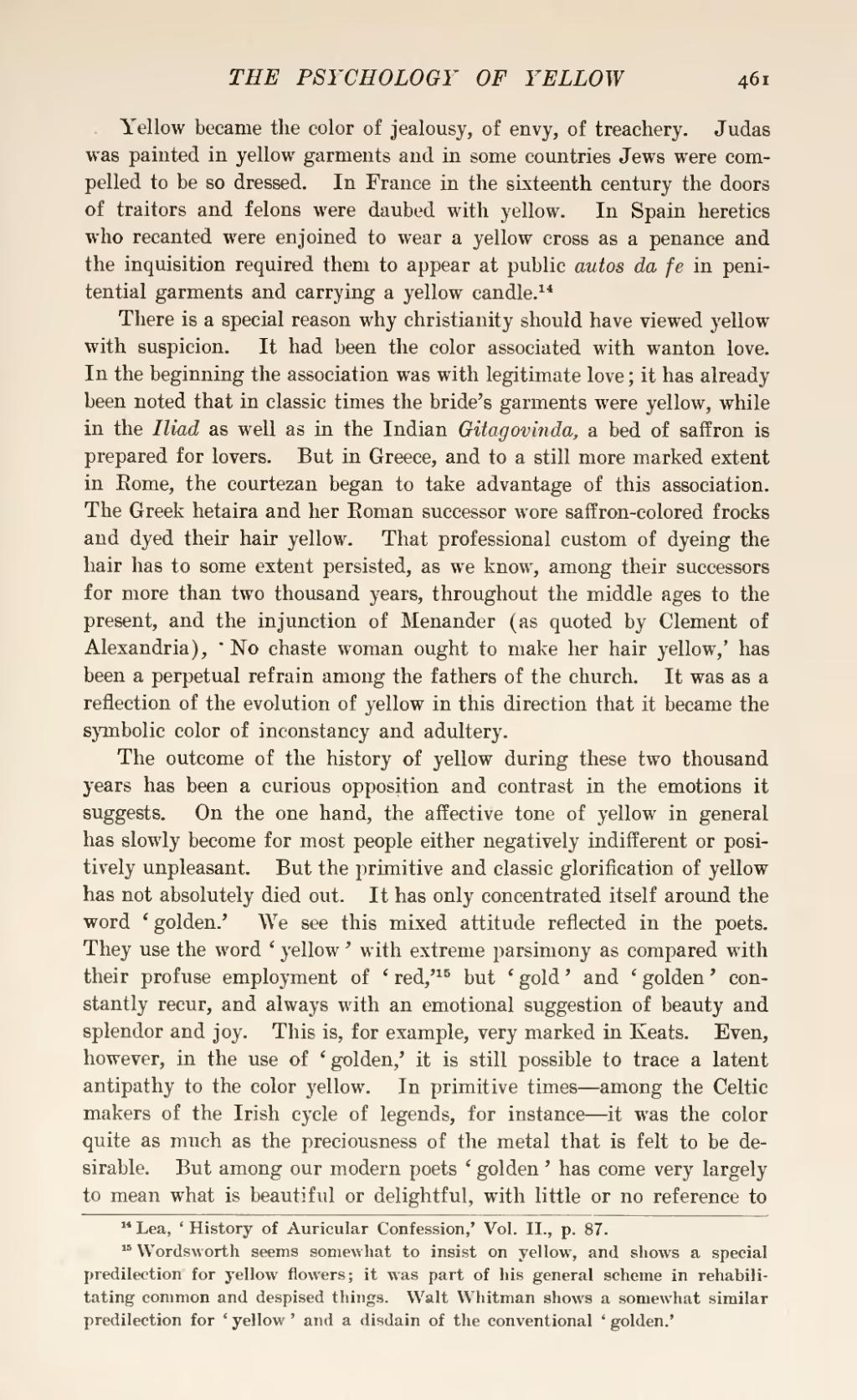Yellow became the color of jealousy, of envy, of treachery. Judas was painted in yellow garments and in some countries Jews were compelled to be so dressed. In France in the sixteenth century the doors of traitors and felons were daubed with yellow. In Spain heretics who recanted were enjoined to wear a yellow cross as a penance and the inquisition required them to appear at public autos da fe in penitential garments and carrying a yellow candle.[1]
There is a special reason why Christianity should have viewed yellow with suspicion. It had been the color associated with wanton love. In the beginning the association was with legitimate love; it has already been noted that in classic times the bride's garments were yellow, while in the Iliad as well as in the Indian Gitagovinda, a bed of saffron is prepared for lovers. But in Greece, and to a still more marked extent in Rome, the courtezan began to take advantage of this association. The Greek hetaira and her Roman successor wore saffron-colored frocks and dyed their hair yellow. That professional custom of dyeing the hair has to some extent persisted, as we know, among their successors for more than two thousand years, throughout the middle ages to the present, and the injunction of Menander (as quoted by Clement of Alexandria), 'No chaste woman ought to make her hair yellow,' has been a perpetual refrain among the fathers of the church. It was as a reflection of the evolution of yellow in this direction that it became the symbolic color of inconstancy and adultery.
The outcome of the history of yellow during these two thousand years has been a curious opposition and contrast in the emotions it suggests. On the one hand, the affective tone of yellow in general has slowly become for most people either negatively indifferent or positively unpleasant. But the primitive and classic glorification of yellow has not absolutely died out. It has only concentrated itself around the word 'golden.' We see this mixed attitude reflected in the poets. They use the word 'yellow' with extreme parsimony as compared with their profuse employment of 'red,'[2] but 'gold' and 'golden' constantly recur, and always with an emotional suggestion of beauty and splendor and joy. This is, for example, very marked in Keats. Even, however, in the use of 'golden,' it is still possible to trace a latent antipathy to the color yellow. In primitive times—among the Celtic makers of the Irish cycle of legends, for instance—it was the color quite as much as the preciousness of the metal that is felt to be desirable. But among our modern poets 'golden' has come very largely to mean what is beautiful or delightful, with little or no reference to
- ↑ Lea, 'History of Auricular Confession,' Vol. II., p. 87.
- ↑ Wordsworth seems somewhat to insist on yellow, and shows a special predilection' for yellow flowers; it was part of his general scheme in rehabilitating common and despised things. Walt Whitman shows a somewhat similar predilection for 'yellow' and a disdain of the conventional 'golden.'
